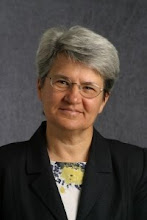
The announcement read, 'The Mayor Councillor Ulla Karin Clark cordially invites Dr Jane Sabes to attend her official installation as Town Mayor of Wokingham in the Town Hall on Tuesday 11th May 2010.'
There everyone was in royal robes and regalia - the town crier, the macebearer and mayor's attendant and chaplain, the town council, the mayor's consort, Lady Elizabeth Godsal, holder of the Office of High Steward appointed by the Queen and other honourable dignitaries. Formal nominations were read to appoint the new mayor with subsequent formal speeches seconding the nomination. The same process followed for appointing the Deputy Mayor. Then came the acceptance speeches and appointment of honorary constable, honorary parade marshall, honorary meteorologist, and honorary translator. Those congregated concluded the service with a rousing rendition of God Save the Queen.
A few months prior to this auspicious occasion, Jan Pearce, dear friend from Stanborough Press, gifted me with a treasure from her library, The English Ceremonial Book - A History of Robes, Insignia and Ceremonies still in use in England authored by Roger Milton. This is a 'must read', background knowledge necessary to understand the significance of such ceremonies.
I am convinced that no one does pageantry and pomp quite like the British! It is absolutely beautiful to behold, sends chills up my spin and creates a large lump in my throat. Most importantly, I offer Brits my sincerest gratitude for these official occasions that help me visualize just how majestic it will be when we someday participate in crowning our Saviour the Lord of all lords, the King of all kings.


